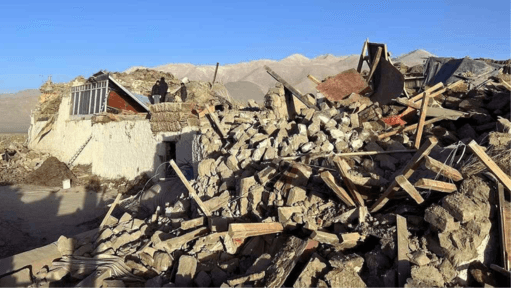
Search Continues for Survivors After Deadly Tibet Earthquake
One of the Most Severe Earthquakes in Recent Years Rocks the Region
Rescue teams worked through the night after a devastating 7.1 magnitude earthquake struck Tibet, killing at least 126 people, injuring 188, and damaging over 3,000 buildings. The quake, which hit the northern foothills of the Himalayas near Mount Everest on Tuesday morning, is among the deadliest earthquakes to affect the region in recent years.
Background: A Region Prone to Seismic Activity
The Tibetan plateau lies on a major geological fault line, where the Indian and Eurasian tectonic plates meet. This makes the region highly susceptible to earthquakes. The disaster comes eight years after the catastrophic 2015 Nepal earthquake, which claimed nearly 9,000 lives.
While seismic activity is common, Tuesday’s quake stands out due to its scale and widespread impact. The earthquake’s epicenter, in Tingri county, is a remote yet culturally significant area that often attracts climbers heading to Mount Everest.
Widespread Destruction
Damaged Buildings and Infrastructure:
More than 3,600 buildings have collapsed, leaving thousands homeless. Traditional dirt-constructed houses in Tingri were particularly affected.
Utilities Disrupted:
Power and water supplies were cut off in many areas, further complicating rescue and relief efforts.
Challenging Weather Conditions:
As temperatures dropped to -16°C, survivors faced freezing conditions, adding urgency to rescue missions.
Rescue Efforts
Large-Scale Operations:
Chinese authorities launched a major rescue operation, deploying drones and rescue teams to locate survivors. Relief workers distributed blankets and essentials to those displaced.
Military Assistance:
The Chinese air force has been actively involved, providing aerial support and logistical aid in reaching remote areas.
Impact on Neighbouring Regions
Tremors were felt in neighbouring Nepal and parts of India, though no major casualties were reported outside of Tibet. Minor damages and cracks in buildings were observed in Kathmandu, Nepal, reviving memories of the 2015 earthquake.
Cultural and Tourism Disruptions
Shigatse Region:
Home to 800,000 residents, Shigatse is culturally significant as the seat of the Panchen Lama, a key figure in Tibetan Buddhism.
Tourism in Tingri:
Tingri, a base for Mount Everest climbers, saw sightseeing tours canceled, and tourists evacuated to safer locations.
Government Response
President Xi Jinping’s Directives:
Chinese President Xi Jinping called for urgent search-and-rescue operations and stressed minimizing casualties and resettling affected residents.
Preparedness for Aftershocks:
The China Earthquake Networks Center reported over 40 aftershocks in the hours following the quake. While the likelihood of a larger quake is low, authorities remain on alert for potential seismic activity.
The earthquake underscores the vulnerability of the region to natural disasters. The combination of its geographical location, dense population in culturally significant areas, and extreme weather conditions makes it critical for authorities to enhance disaster preparedness and community resilience.
As rescue efforts continue, the focus remains on locating survivors, restoring infrastructure, and providing much-needed relief to those affected.
For any enquiries or information, contact info@thelawreporters.com or call us on +971 52 644 3004. Follow The Law Reporters on WhatsApp Channels